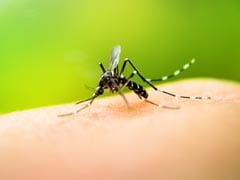Risks Of Artificial Nail Extensions: Understanding the risks of gel and acrylic nail extensions can help individuals make informed choices about their nail care routine.

All You Need To Know About Artificial Nail Extensions: Potential Risks Of Gel And Acrylic Nails
Risks Of Artificial Nail Extensions: Artificial nail extensions have gained immense popularity in the beauty industry, offering individuals an easy way to achieve long, flawless nails. Gel nails and acrylic nails are the two most commonly used types of nail extensions, known for their durability and aesthetic appeal. However, while these nail enhancements can be stylish, they also come with potential health risks. According to the American Academy of Dermatology (AAD), prolonged use of artificial nails can lead to nail infections, skin irritation, and even allergic reactions. Understanding the risks of gel and acrylic nail extensions can help individuals make informed choices about their nail care routine.
What are the risks of artificial nail extensions?
Though gel nails and acrylic nails provide a polished and well-maintained look, they can have adverse effects on nail health. The process of application, chemicals used, and frequent exposure to UV light (in the case of gel nails) may lead to significant nail and skin damage. Below are some of the common risks associated with these nail extensions.
1. Weak and brittle natural nails
Both gel and acrylic nail extensions require the filing down of natural nails, which weakens the nail bed over time. The constant buffing and use of strong adhesives can strip the nails of their natural strength, making them brittle and prone to breakage. The British Association of Dermatologists (BAD) states that continuous use of nail extensions can lead to thinning of the nail plate, making it difficult for natural nails to recover.
2. Risk of nail infections
When artificial nails are applied incorrectly or left on for too long, bacteria and fungi can grow underneath them, leading to infections. According to the Centres for Disease Control and Prevention (CDC), warm and moist conditions under the nails provide the perfect environment for fungal infections. Symptoms may include discolouration, pain, swelling, and foul-smelling nails.
3. Exposure to harmful chemicals
Acrylic and gel nails contain chemicals such as formaldehyde, toluene, and methacrylate compounds, which can be harmful when inhaled or absorbed through the skin. These chemicals may cause allergic reactions, skin irritation, and even respiratory issues. The Environmental Protection Agency (EPA) has classified formaldehyde as a potential carcinogen, making it crucial to limit exposure to such toxic substances.
4. Increased risk of skin damage from UV exposure
Gel nails require curing under UV or LED lamps, which emit ultraviolet radiation. According to the Skin Cancer Foundation, frequent exposure to UV light during nail treatments can contribute to premature skin ageing and increase the risk of skin cancer. Dermatologists recommend using broad-spectrum sunscreen or wearing UV-protective gloves to minimise exposure.
5. Allergic reactions and skin irritation
Certain individuals may develop allergic reactions to the chemicals used in gel and acrylic nails. Symptoms include redness, itching, swelling, and even blisters around the nail bed. The American Contact Dermatitis Society (ACDS) warns that methacrylate-based products can trigger severe allergic reactions, leading to chronic nail and skin damage.
6. Difficulty in nail recovery after removal
Removing artificial nails, especially acrylics, requires soaking them in acetone, which can dehydrate and weaken natural nails. The American Academy of Dermatology (AAD) advises against frequent use of acetone-based removers as they strip the nails of moisture, leading to dryness and peeling. Proper nail care post-removal is essential to restore nail health.
7. Potential damage to cuticles and surrounding skin
Excessive filing and aggressive removal of artificial nails can harm the cuticles and surrounding skin. The cuticles serve as a protective barrier against bacteria and fungi, and any damage to them increases the risk of infections. Dermatologists recommend using cuticle oils and moisturisers to keep the nail area hydrated and protected.
While gel and acrylic nails provide an aesthetically pleasing look, they come with several health risks that should not be ignored. Weak nails, skin damage, allergic reactions, and exposure to harmful chemicals are some of the major concerns associated with artificial nail extensions. Those who frequently use these enhancements should take precautions such as choosing non-toxic products, allowing breaks between applications, and following proper nail care routines. Awareness and moderation can help individuals enjoy beautiful nails while ensuring their long-term nail and skin health.
Disclaimer: This content including advice provides generic information only. It is in no way a substitute for a qualified medical opinion. Always consult a specialist or your own doctor for more information. NDTV does not claim responsibility for this information.
DoctorNDTV is the one stop site for all your health needs providing the most credible health information, health news and tips with expert advice on healthy living, diet plans, informative videos etc. You can get the most relevant and accurate info you need about health problems like diabetes, cancer, pregnancy, HIV and AIDS, weight loss and many other lifestyle diseases. We have a panel of over 350 experts who help us develop content by giving their valuable inputs and bringing to us the latest in the world of healthcare.













